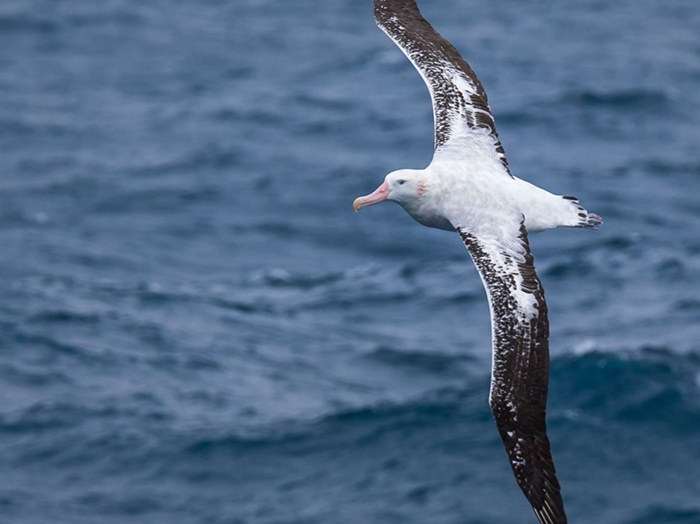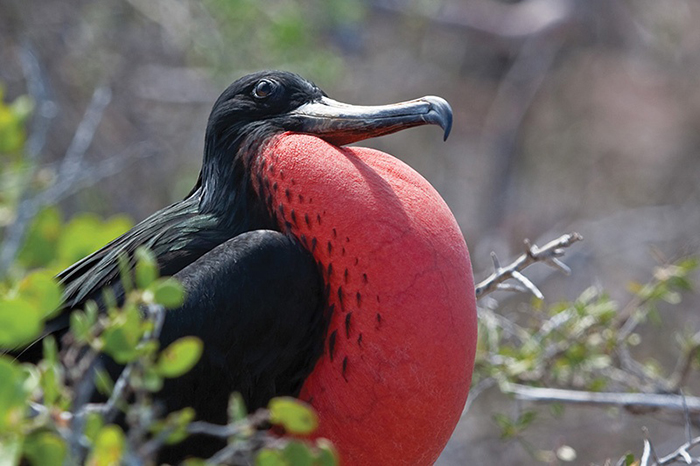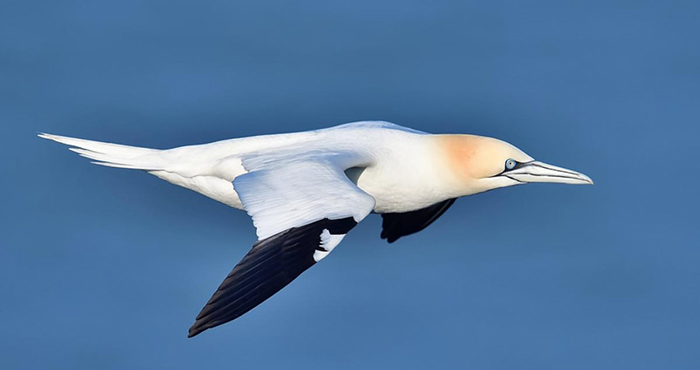Types Of Seabirds
Are you fascinated by the variety of birds soaring across our vast oceans, and wonder to know more about them? Seabirds make up approximately 325 species worldwide, adapted uniquely for survival in marine environments.
This article will take you on an illuminating journey through different types of seabirds – from penguins to gulls – exploring their characteristics, behaviors, threats they face and conservation efforts underway.
Ready to plunge into the world of these remarkable creatures? Let’s dive in!
Common Types of Seabirds
The common types of seabirds include albatross, booby, frigatebird, fulmar, gannet, murre, penguin, petrel, puffin, shearwater, tropicbird, gulls and terns.
Albatross

Albatrosses are one of the most unique seabirds with impressive physical characteristics and adaptations. They possess wingspans that rival those of any other bird, allowing them to glide great distances across the ocean without landing.
Their strength and endurance set them apart in the avian world. Albatrosses use these abilities for long-distance foraging trips that can last several weeks at a time. This illustrates their remarkable adaptation to an aquatic lifestyle.
Sadly, they’re not immune to environmental threats like pollution or overfishing which impact their food sources drastically.
Booby
Boobies are a type of seabird found in tropical and subtropical regions around the world. These birds have long, slender bodies and large wingspans that allow them to soar effortlessly over the ocean.
Boobies are known for their distinctive bright blue feet, which they use as a form of courtship display. They also have excellent diving abilities and can plunge deep into the water to catch fish.
Boobies typically nest in colonies on islands or rocky cliffs, forming large breeding colonies with other seabird species. They play an important role in marine ecosystems by feeding on small fish and helping to regulate populations.
Frigatebird

Frigatebirds are large seabirds known for their impressive wingspan and aerial agility. They have long, pointed wings that allow them to soar effortlessly through the skies. Frigatebirds are often found near coastlines and tropical regions, where they feed on fish and other marine creatures.
These birds have a unique hunting strategy – instead of diving into the water like many seabirds, they snatch prey from the surface using their sharp beaks. With their distinctive silhouette and skillful flight, frigatebirds are a fascinating species to observe in their natural habitat.
Fulmar
Fulmars are a type of seabird found in the North Atlantic and Arctic oceans. They have adapted to life at sea with their streamlined bodies and long wings, allowing them to fly effortlessly over the water.
Fulmars are known for their unique feeding behavior where they scavenge for food by diving into the ocean from great heights. These birds also produce a foul-smelling oil that they can projectile vomit as a defense mechanism against predators.
Despite their somewhat unpleasant smell, fulmars play an important role in marine ecosystems as indicators of environmental health and biodiversity.
Gannet

Gannets are large seabirds known for their striking appearance and impressive diving skills. They belong to the family Sulidae and are closely related to boobies. Gannets have long wings, a sharp beak, and a distinctive black-and-white plumage.
They primarily feed on fish, which they catch by plunge-diving from heights of up to 130 feet. This remarkable hunting technique allows them to reach speeds of over 60 miles per hour as they hit the water with precision.
Gannets breed in colonies on cliffs or remote islands, where they form lifelong pair bonds and raise one chick each year. Their population is found across the Atlantic Ocean, including regions such as Canada’s Newfoundland coast and Scotland’s Shetland Islands.
These magnificent birds play an important role in marine ecosystems by contributing nutrients through their droppings and serving as indicators of ocean health.
Murre
Murre is a type of seabird that belongs to the Auk family. These birds are known for their dark plumage and white bellies, making them easily recognizable. Murres can be found in coastal areas around the Northern Hemisphere, particularly in the Arctic and sub-Arctic regions.
They have adapted to life at sea and are excellent divers, capable of diving up to 200 feet in search of fish and other prey. Murres typically nest on steep cliffs or rocky ledges, forming large colonies with thousands of individuals.
These seabirds play an important role in marine ecosystems as they contribute nutrients through their droppings, supporting the growth of phytoplankton and other marine organisms.
Penguin

Penguins are a unique type of seabird that have adapted to life in the cold Antarctic region. They are known for their distinctive black and white plumage, which helps camouflage them while swimming in the water.
Penguins have streamlined bodies and flipper-like wings that allow them to swim gracefully underwater, reaching impressive depths and speeds. Unlike most birds, penguins cannot fly but instead use their wings as paddles to navigate through the ocean.
These fascinating creatures rely on their strong sense of teamwork and social structures within their colonies for survival, especially during breeding season when they build nests made of pebbles on land or ice shelves.
Petrel
Petrels are a type of seabird that can be found in various locations around the world, including coastal areas and remote islands. These birds have adapted to live at sea or near it, allowing them to travel long distances over water.
With their excellent flying skills, petrels rely on these abilities to search for food and migrate to different regions. They are known for their unique physical characteristics, which enable them to survive in their specific marine environment.
The diversity of petrel species contributes to the richness and complexity of marine ecosystems worldwide.
Puffin
Puffins are a popular and distinctive species of seabirds known for their colorful beaks. These small birds, which belong to the family Alcidae, are often found in coastal regions with rocky cliffs or islands.
Puffins are excellent divers and swimmers, using their wings to navigate underwater and catch fish. They can dive up to 200 feet deep and stay submerged for several minutes at a time.
Puffins also have strong flying abilities, allowing them to travel long distances over the ocean in search of food. They nest in burrows on land and form monogamous pairs that mate for life, usually producing only one chick per year.
With their unique appearance and fascinating behaviors, puffins are a beloved sight for birdwatchers around the world.
Shearwater
Shearwaters are a type of seabird that can be found in various locations around the world. They are known for their long, narrow wings and streamlined bodies, which allow them to soar effortlessly over the ocean.
Shearwaters have adapted to life at sea and spend most of their lives on the water, only coming ashore to breed. These birds are excellent divers and can plunge deep into the water in search of fish and other prey.
With their keen eyesight and agile flight skills, shearwaters are able to cover large distances as they search for food. They play a vital role in marine ecosystems by helping to maintain balance within the food chain.
Tropicbird
Tropicbirds are a unique type of seabird known for their beautiful and distinctive appearance. With their long, elegant tail feathers and bright plumage, they stand out among other birds in the tropical regions where they reside.
These birds have adapted to life near the coastlines and islands, making them exceptional divers and flyers. They rely on their excellent aerial skills to catch fish by plunging into the water from great heights.
Tropicbirds are not only fascinating to observe but also play an essential role in maintaining the delicate balance of marine ecosystems.
Gulls
Gulls are a common type of seabird found in coastal areas around the world. They have adapted to live near the sea and can be seen flying over beaches, harbors, and coastal cliffs.
Gulls have strong wings that allow them to fly long distances in search of food. They feed on a variety of items, including fish, insects, small mammals, and even garbage. Gulls are known for their loud calls and scavenging behavior.
They are opportunistic feeders and often steal food from other birds or snatch it from people at picnics or outdoor cafes. Some species of gulls also nest in colonies along rocky coastlines or on offshore islands.
Terns
Terns are a type of seabird known for their graceful flight and agile hunting skills. With their sleek bodies and long, pointed wings, terns are well adapted for catching fish in the open ocean.
These birds can be found on every continent except Antarctica, often nesting in colonies along coastlines or on remote islands. Terns have sharp beaks that allow them to snatch fish from the water’s surface with precision.
They also have excellent eyesight, which helps them spot their prey from high above the waves. Terns play an important role in marine ecosystems as they help control populations of small fish by feeding on them.
Overview of Seabird Characteristics and Behaviors
Seabirds are fascinating creatures that inhabit the marine environment, but many people may struggle to identify and understand the different types. Did you know that there are approximately 325 species of seabirds? In this blog post, we will explore some common types of seabirds and provide an overview of their characteristics, behaviors, and unique adaptations.
So get ready to embark on a journey through the world of these amazing birds!
Seabird Threats and Conservation Efforts
Seabirds face various threats that jeopardize their survival and well-being. One primary threat is habitat loss due to human activities such as coastal development, pollution, and oil spills.
These activities destroy nesting sites and feeding grounds for seabirds, disrupting their reproductive cycles and reducing food availability. Climate change also poses a significant threat to seabirds, impacting their food sources and altering their breeding patterns.
Conservation efforts are crucial in safeguarding these magnificent creatures. Many organizations work tirelessly to protect seabird populations by establishing protected areas where they can breed undisturbed.
Additionally, efforts are made to reduce pollution levels in the oceans through stricter regulations on waste disposal and fishing practices. By monitoring seabird populations and conducting research on their behaviors and migration patterns, experts aim to gain valuable insights into how best to preserve these unique species for generations to come.
Conclusion
Seabirds are a diverse and fascinating group of marine birds that inhabit various environments around the world. From majestic albatrosses to adorable penguins, each species has unique adaptations and behaviors that allow them to thrive in their specific habitats.
The presence of seabirds contributes to the complexity and richness of our marine ecosystems, making them an important part of our natural world.




